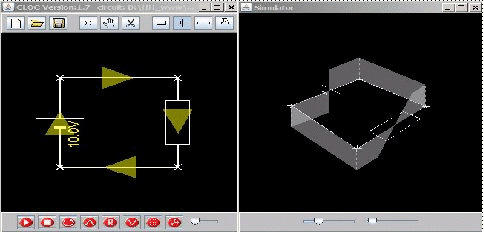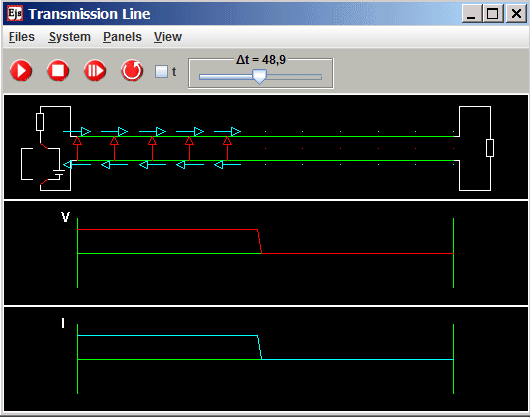back to Circuits (home page)
Part 2: Simulation of voltage and current in electric circuits
2.1. Visualization of current and voltage and transition processes in simple electric circuits
In physics classes the phenomena of the electrical circuit are traditionally treated as stationary states.
Any changes will occur in accordance with Ohm's law and Kirchhoff's rules and this without regard to any transition processes.
A detailed discussion related to this issue is found in the literature (Nature does not make leaps -
and this holds also for OHM´s law)
For visualization of transition processes, a simulation program was developed, called CLOC (Conceptual Leaning of Circuits).
The algorithm of this program is based on the so-called container model. Delays thereby achieved to reach stationary final states are greatly increased compared to reality.
They correspond to processes in circuits with large capacitors parallel to all resistors.
For a detailed discussion of this model see the above-mentioned literature.
As shown in the following figure the program shows an edited circuit in two separate windows with indication of the current in 2D and the potential distribution in 3D.
.

Visualization of current (2D) and potential (3D)
A detailed user manual and documention about this program can be found at CLOC-Dokumentation.
The distribution of the potential, as shown in the 3D-window, can be associated in a first approximation to the distribution of surface charges along a conductor circuit.

Visualization of current (2D) and potential (3D)
2.2. Simulation of transition processes on a double line
If a voltage source is connected to an electric circuit, surface charges will sread out over the entire available surface with almost the speed of light.
Already after a time period on the order of 10-7 seconds a new steady state is achieved in circuits of conventional size.
By using the simulation program "Teel - Transmission Line" it can be studied in detail, how this process evolves.
The program Teel simulates the propagation of voltage and current along a double line on the basis of Maxwell's equations.
A double line is characterized in that distance and diameter of the wires are negligible compared with the length of the line. The line should ideally be straight or should be only slightly curved.
The following figure shows the interface of the program while simulating the simple process after a power source has been connected to a double line.

Simulation of a transient process
after a power source as been connected to a double line
The program allows the setting of all parameters that are relevant for a double line.
The values for voltage between the lines and current on the upper line are continuously calculated and displayed as a function of the longitudinal coordinate.
Thus, all transition processes that occur at every parameter change, can be studied in detail.
From a special didactic interest is the possibility to simulate in the middle of the double line, either a series resistor or a leakage resistor.
This offers the possibility to study in detail the processes when either a simple circuit with series resistors or with parallel resistors is switched either on or off.
A documentary about the Teel program as well as a tutorial about the topic: "Transport processes on a double line" can be found under Home page H.Härtel

Simulation of a transient process
after a power source as been connected to a double line
zurück zur Startseite